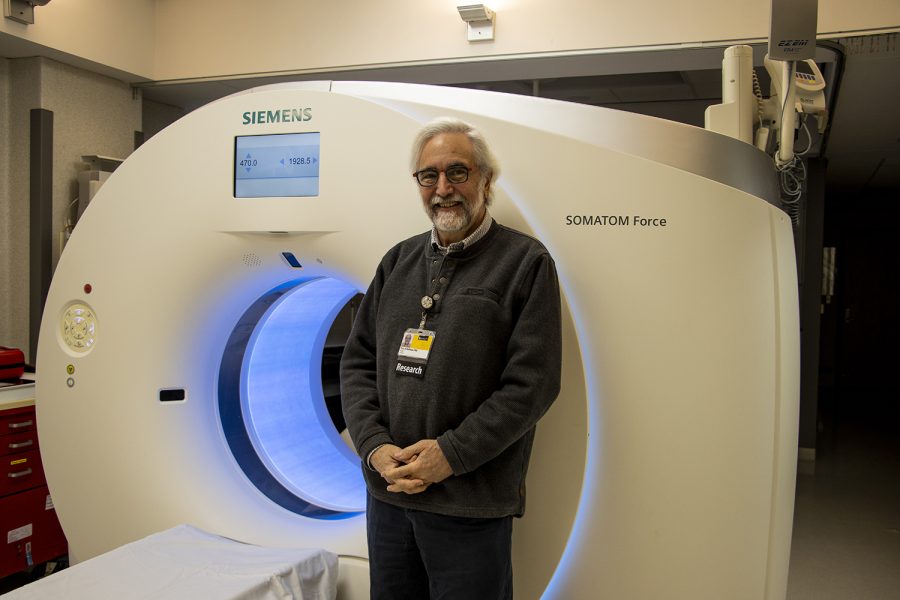UI professor donates funds raised from fused-glass artwork to children in Ukraine
Eric Hoffman, who researches radiology, medicine, and biomedical engineering, will donate all proceeds from his artwork sales at Iowa City’s spring Gallery Walk to children in Ukraine.
Eric Hoffman, a professor of radiology, medicine, and biomedical engineering, poses for a portrait in the University of Iowa Hospital on Tuesday, March 29, 2022. (Isabella Cervantes/The Daily Iowan)
March 30, 2022
As a researcher who has extensively studied the human lung and heart with CT imaging, University of Iowa Professor Eric Hoffman described the images as equally artistic and scientific. His passion for science intertwines with an adoration for art through his fused-glass creations.
Last month, Hoffman sold some of his art as part of Downtown Iowa City’s Spring Gallery Walk. But instead of profiting from his vibrant fused-glass bowls and decorated plates, he chose to donate all his proceeds to children in Ukraine, where Russia’s invasion of the country has killed hundreds of people.
Hoffman sold his art at AKAR, a local art and design store, with several pieces ranging in price from $95 to $325. His decorated plates featured cabins, barns, trees, and even a piece depicting a bright red line drawn through a group of farm animals, inspired by his vegetarianism.
Some of his work is still on sale at AKAR, and all future revenue from these fused-glass pieces will be donated to the Save the Children Ukraine Crisis Relief Fund, which Hoffman said stood out to him compared to other Ukraine charities because he is a parent.
“I think, just being a parent, that you think of your own children being in that situation,” he said. “I think that’s just sort of a common human trait.”
Hoffman also noted that his family tree stems from both Belarus and Russia, and he feels “almost an embarrassment” at the actions of those countries.
Related: Isaac Stauffer, UI alum and professional tap dancer, performs with the Chicago Tap Theatre
At the end of the 19th century, Hoffman’s Jewish grandfather on his paternal side fled Belarus by bribing a border guard and landed in Chicago after the majority of his family was killed in concentration camps. Hoffman’s maternal grandmother also left Russia and began farming in Colorado.
“It brought home that this was the country that my grandfather fled so many years ago. It was such a terrible place then, and it’s still such a terrible place now,” Hoffman said. “I just felt this sort of camaraderie to do something for Ukraine.”
Hoffman said that he took ceramics classes in high school and even took some courses on stained glass throughout college but didn’t begin working with fused glass until much later.
While attending his nephew’s Bar Mitzvah one year, he said his sister organized a trip to a craft store to entertain the relatives she was hosting, where they could each pick a craft to make.
“I picked fused glass, put together a fused glass piece, and then left it for them to put in their kiln,” he said. “Unfortunately, I think I picked different glasses that were incompatible with each other, and it blew up, so I ended up with a bunch of crumpled pieces of broken pieces of shard.”
Despite the learning curve that came with working with the medium, Hoffman said he was intrigued enough with the process that he bought his own kiln.
A scientist through and though, Hoffman decided to continue experimenting with fused-glass and his kiln. He said although he never expected it, it is one more example in his life where his scientific background and artistic interests have intersected.




